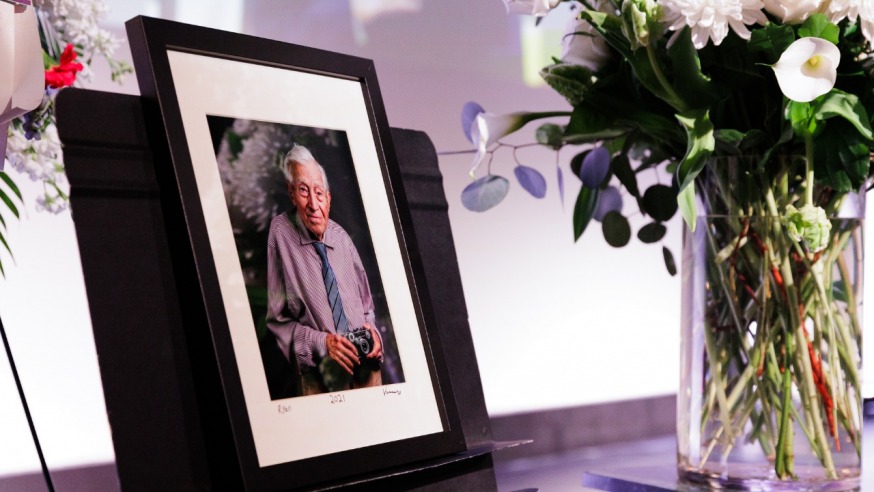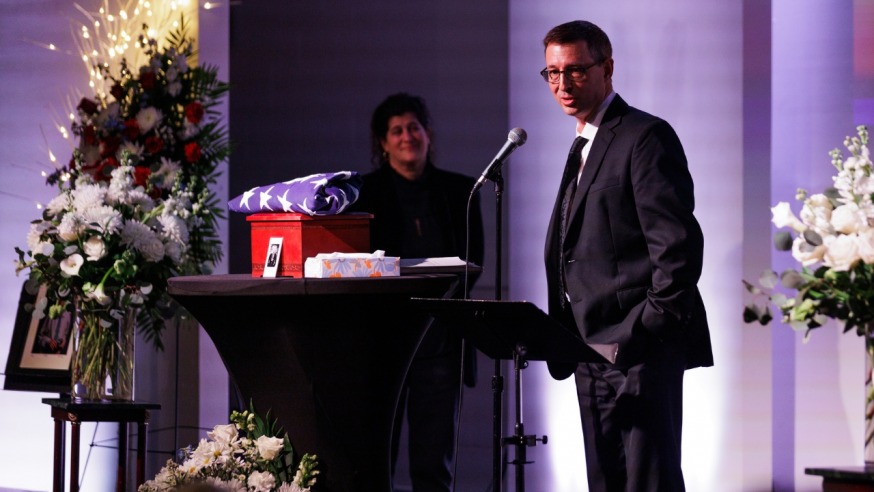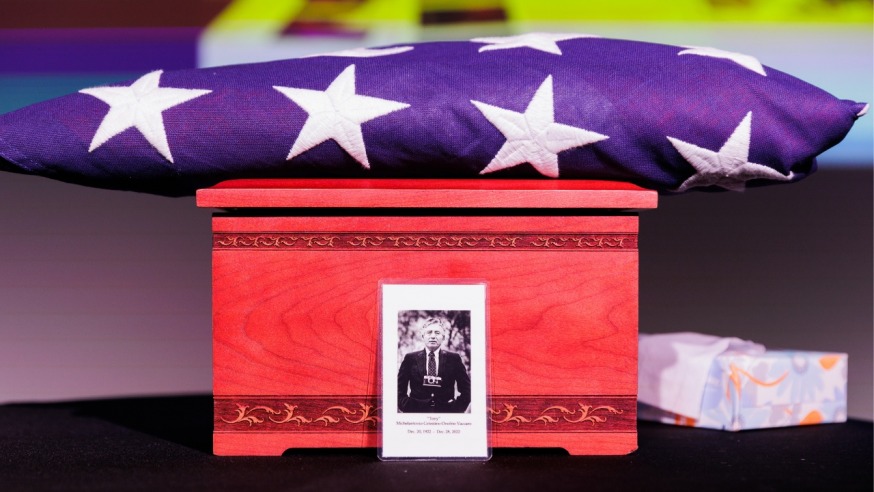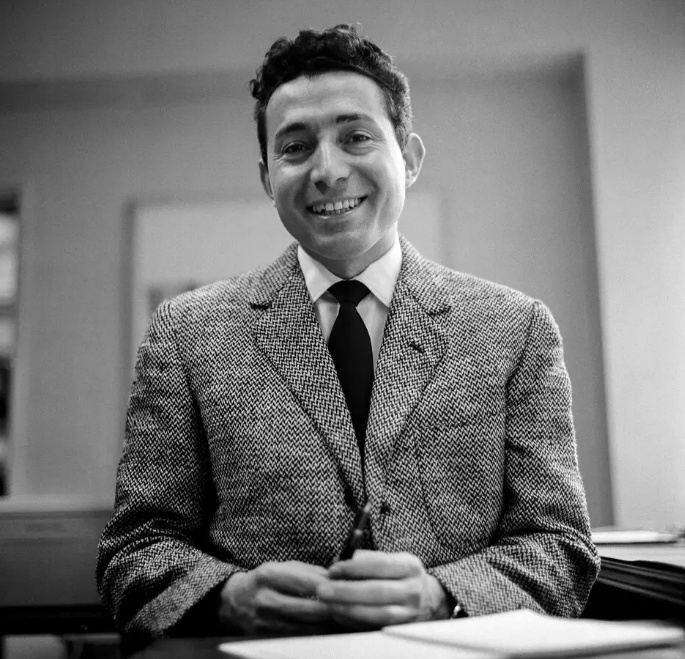
A memorial service was held in Long Island City Wednesday for Tony Vaccaro, a world-renowned fashion, celebrity and wartime photographer who died on Dec. 28 (Photo by Paul Frangipane)
Jan. 5, 2023 By Michael Dorgan and Paul Frangipane
Around 100 people attended a memorial service in Long Island City Wednesday for Tony Vaccaro, a world-renowned fashion, celebrity and wartime photographer who died on Dec. 28.
Family, friends, former colleagues and leaders in the photography industry celebrated Vaccaro’s life in an intimate gathering at the Wellspring Church, located at 10-15 46th Rd.
Vaccaro, a Long Island City resident who turned 100 eight days before his death, was known for the powerful photographs he took while in combat during World War II. The war hero served as a private in the 83rd Infantry Division of the U.S. Army on the battlefields in Europe.
He then went on to become a world revered photographer documenting famous figures in art, film, fashion and politics. Vaccaro snapped icons such as Sophia Loren and Pablo Picasso during his decades-long career as well as former U.S. President John F. Kennedy and the Eisenhower family.
Speakers at the ceremony recalled Vaccaro’s brilliant photography skills as well as his affection for people and the human race – despite witnessing firsthand the horrors of war.
“What impressed me about Tony was not only his photographs but his philosophy about life,” said Chester Higgins, a photographer who worked with Vaccaro for Life Magazine.
“Tony said to me: ‘the world is my nation, humanity is my brother and doing good is my religion… doing good to each other is the price we pay for taking space on the planet,’” Higgins said.
“And in Tony’s case, his price is obviously fully paid,” Higgins said.
Vaccaro’s son, Frank, said that his father overcame incredible adversity as a child having lost both his parents by age 5 and then being raised by a “brutal” uncle in Italy who physically abused him.

Tony Vaccaro’s son, Frank, speaking at the memorial (Photo by Paul Frangipane)
“My dad never taught me hate, never had anything bad to say about anybody,” Frank Vaccaro said.
“He would always say, ‘We have to come together as a race, a human race,’ he just repeated it all the time to me and my brother.”
Tony Vaccaro was born to Italian parents in Greensburg, Pennsylvania in 1922 and when he returned to America from Italy he attended Isaac E. Young High School in New Rochelle before being drafted into the U.S. Army in 1944.
“He was able to connect with everybody in high school when he started to carry a camera, it was a real bridge for him, a tether to everyone else,” Frank Vaccaro said, noting his father’s English wasn’t as good as his fellow students at the time.
“Then when he was sent to war he carried a camera the whole time, the camera connected him to the soldiers as well.”
Vaccaro fought in Normandy, Belgium, Luxembourg and Germany, taking pictures along the way. He used army helmets to develop his film at night and then hung the prints on tree branches to dry. Vaccaro was shot and injured twice and received a purple heart.
Some of Vaccaro’s most impactful World War II photographs include an image of a dead soldier whose body is partly covered by snowfall, a soldier running through smoke from shellfire and a soldier kneeling to kiss a little girl during a celebration in a newly liberated French town.
Vaccaro also snapped many harrowing images in the aftermath after the war including a distraught German soldier who had returned to his home in Frankfurt in 1947 only to discover that his wife and children had been killed.

An image of Tony Vaccaro placed in front of his remains (Photo by Paul Frangipane)
In December, a five-day photo exhibition was held in Manhattan showcasing the best of Vaccaro’s life’s work. The display, called “Tony Vaccaro: The Centennial Exhibit,” was hosted by the Monroe Gallery, a New Mexico-based gallery of photography.
Sidney Monroe, the co-owner of the Monroe Gallery, said that the organization will help honor Vaccaro’s memory and life’s work.
The gallery also holds many of Vaccaro’s prints at its headquarters including portraits of Loren, artist Georgia O’Keeffe, racing tycoon Enzo Ferraro and Leonard Cohen. Other influential images include a picture of actress Gwen Verdon on a hammock in Manhattan and French couturier Hubert de Givenchy getting out of a car in Paris.

Sophia Loren (L) and John F. Kennedy (R) taken by Tony Vaccaro (Photos provided by the Monroe Gallery)
“We are ensuring that Tony is remembered as the towering, important master that he was,” Monroe said.
“It is often said that ‘anyone can take pictures but not everyone can be a photographer.’”
“I’d like to take that one step further… you can be a photographer but there will never be another Tony Vaccaro.”
Michelle Monroe, who is also a co-owner at the gallery, compared Vaccaro to a comet.
“He was a comet hurdling across the sky hundreds of thousands of lights, each one a flash bulb, each one a gift and proof of life and history,” Monroe said.
“All of the bright sparks signify his experiences, his empathy, his integrity and his passion for life and his family.”
Vaccaro is survived by his sons Frank and David from his marriage to Anja Lehto — a former fashion model from Finland — and two grandsons. Vaccaro and Lehto separated in 1979; she died in 2013.
His remains will be buried at Calverton National Cemetery in Long Island Friday.

An undated portrait of Vaccaro (Photo provided by Tony Vaccaro Archives)






